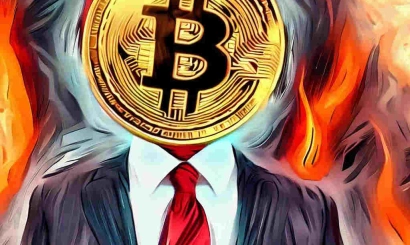The positive momentum from the ETF is played out. What's next for Bitcoin
Experts explain the reasons for the decline in the Bitcoin exchange rate
Experts discuss what is happening in the cryptocurrency market, why assets are depreciating, and what might influence their prices in the near future.
On January 23, the price of Bitcoin dropped below $39,000. Since the beginning of the year, the value of the leading cryptocurrency has decreased by 10%, from $43,700 to $38,900. Following the launch of spot Bitcoin ETFs on January 11, the asset surged to $49,000, but failed to sustain this level and corrected to its lowest point since early December.
BTC/USD
39,286 -880 (-2.19%)
The overall cryptocurrency market followed the lead of the primary cryptocurrency. At the beginning of the year, the market capitalization of all assets represented on CoinGecko amounted to $1.77 trillion. By January 10, it had risen to $1.86 trillion, but by January 23, it had fallen to $1.69 trillion.
The "fear and greed" index in the crypto market reached the "extreme greed" zone with a level of 76 out of 100 points in mid-January for the first time in two years. As of January 23, the indicator dropped to neutral sentiments, holding steady at 50 points.
Experts told "Soft4bro" what is happening in the cryptocurrency market, why coin prices are falling, and what to expect from their dynamics.
"Investors are concerned about uncertainty."
OKX Commercial Director Lennix Lai
The rise in the price of Bitcoin before the official announcement of the Bitcoin ETF launch was based on investors' optimistic expectations. The Bitcoin price at the time of the ETF launch already factored in the positive effect of this new instrument. After the launch of trading, many Bitcoin holders preferred to take profits from its recent price increase.
Additionally, the cryptocurrency market is currently experiencing pressure from macroeconomic factors. Investors are concerned about the uncertainty related to the pace and timing of the US interest rate cut.
The upcoming meeting of the US Federal Reserve (FRS) is scheduled for January 30–31, with the next one on March 19–20. If at the end of 2023 market participants expected the US regulator to start lowering the key rate in spring 2024, now, amidst the still high inflation rate in the US, investor sentiment is not as optimistic.
"Bulls need to gather strength."
CommEX Regional Director Anton Toropcev
The positive sentiment related to the approval of the Bitcoin ETF launch has been fully played out. Investors who entered the cryptocurrency market in the fall have taken profits, selling coins at the peak of excitement around Bitcoin exchange-traded funds.
Now, a positive effect can be expected from the existence of Bitcoin ETFs on the stock market, but this effect will not manifest immediately; it is a medium- and long-term perspective. Institutional capital—new ETFs have paved the way for this type of capital to enter the crypto market—is conservative, and a massive influx of investments should not be expected all at once. This is groundwork for the future.
"The next month and a half in the cryptocurrency market may be dominated by bearish sentiments. Bulls need to gather strength for a new leap and find a new reason for inspiration."
The reason for investors' uncertainty about the pace of the US interest rate cut is that inflation in the US still remains relatively high—above the target of 2%. Therefore, until the March meeting of the US Federal Reserve, Bitcoin may show high volatility with an overall downward trend to $37,000.
All of this does not negate the overall forecast for 2024, which promises to be successful for the cryptocurrency market. In April 2024, the Bitcoin network is expected to undergo a halving. This traditionally provides support to the coin's price as the cost of mining increases, and miners hold mined coins in their wallets, waiting for a more favorable selling price. This creates a supply deficit and pushes the price of Bitcoin up.
"The decline is happening too sharply."
BitRiver Financial Analyst Vladislav Antonov
The cryptocurrency community is watching the trading of Bitcoin ETFs. Daily trading volumes amount to around $2 billion, and everyone is satisfied. However, the outflow from Bitcoin ETFs is accelerating, exceeding the inflow. Over five days, the outflow from Grayscale's ETF amounted to $2.2 billion (an average of $441 million per day). Over all trading days, the outflow from Bitcoin ETFs reached $3.45 billion. The outflow from the Grayscale fund specifically has a negative impact on the market and prompts buyers to take profits from Bitcoin's growth in 2023.
As part of the correction, a decrease in the BTC price to $38,500 was expected by February 10. However, the decline is happening too sharply, and if selling pressure persists, it may reach $36,500.
According to the price model, there may not be an acceleration. The closing price on January 23 should "provide the keys" to the future price movement. Overcoming the decline from January 22 and closing the day around $41,500 will be a positive signal for buyers and a halt to the decline.
As for the halving, the price of Bitcoin has never risen immediately after it. However, any major players will use any downturn to increase long positions.






